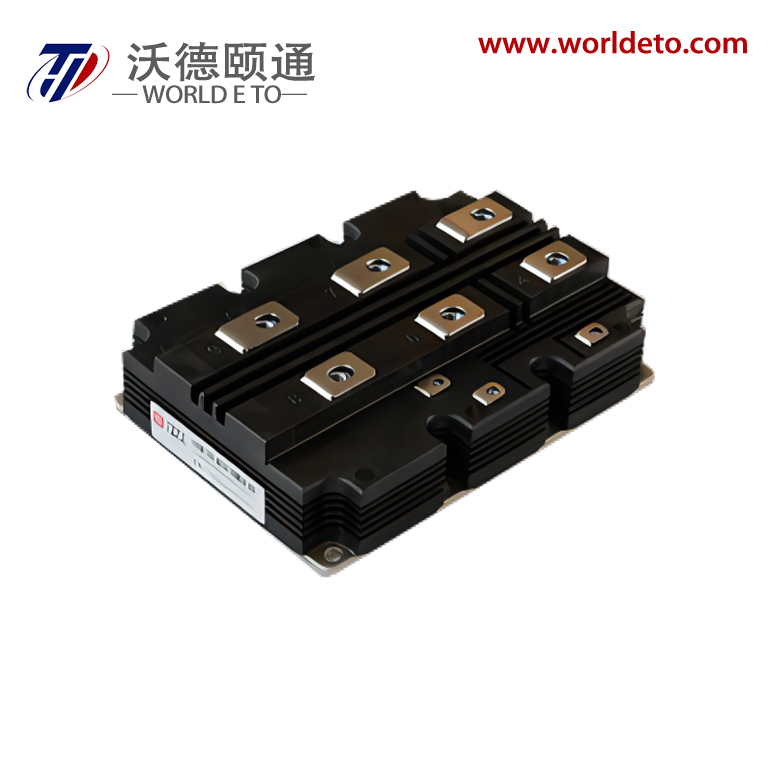
Insulated Gate Bipolar Transistor (IGBT) modules are vital components in modern power electronics. These modules combine the best characteristics of MOSFETs (high input impedance and ease of control) and bipolar transistors (high current and voltage handling), making them ideal for high-power applications. From industrial motor drives to renewable energy systems, IGBT modules are used extensively to manage power efficiently. However, like any electronic component, IGBT modules require proper handling and maintenance to achieve optimal performance and efficiency. Here are some essential tips for maximizing the efficiency of IGBT modules.
1. Understand the Thermal Management Requirements
One of the most critical factors in ensuring IGBT module performance is effective thermal management. These devices can generate significant heat during operation, especially when switching high-power loads. Excessive heat can cause thermal stress, which reduces the lifespan of the module and leads to inefficient operation.
To maximize efficiency, ensure that the IGBT modules are adequately cooled. This can be achieved through active or passive cooling systems such as heat sinks, fans, or liquid cooling. In applications with high power output, such as inverters and motor drives, liquid cooling is often the most effective solution.
Additionally, ensure that the heat sink is properly sized and that there’s adequate airflow to dissipate heat away from the module. Regularly inspect thermal interfaces to prevent thermal resistance buildup, which can degrade performance.
2. Use Proper Gate Drive Circuitry
The efficiency of an IGBT module is significantly influenced by the gate drive circuitry used. The gate drive is responsible for switching the IGBT on and off, and improper gate drive signals can result in inefficient operation, especially at high switching frequencies. To ensure optimal switching performance, use a gate driver that matches the specifications of the IGBT module.
Gate drivers should provide sufficient voltage to turn the IGBT on fully and ensure that it turns off rapidly, reducing switching losses. Additionally, choose gate drivers with low switching time and proper dead time to minimize crossover conduction (where both the collector-emitter voltage and current are present simultaneously).
3. Operate Within the Safe Voltage and Current Ratings
Operating IGBT modules within their specified voltage and current ratings is essential to ensure reliable performance and to prevent damage. Exceeding the voltage or current limits can lead to excessive power losses, overheating, and even catastrophic failure of the module.
Always select IGBT modules that are appropriately rated for your application’s requirements. Oversizing can result in unnecessary costs, while undersizing can compromise performance and lead to failures. Carefully monitor operational parameters like voltage, current, and temperature, and ensure they remain within safe operational limits.
4. Minimize Switching Losses
Switching losses occur when the IGBT transitions between its on and off states. These losses can significantly impact the efficiency of power converters and inverters, especially at higher switching frequencies. To minimize switching losses, choose IGBT modules that are optimized for your switching frequency range.
In high-frequency applications, such as inverters for renewable energy systems or variable-speed drives, choose IGBT modules that are specifically designed for efficient switching at high frequencies. Additionally, use snubber circuits and other techniques to mitigate ringing and voltage spikes during switching transitions.
5. Consider Parasitic Inductance and Capacitance
Parasitic inductance and capacitance in the layout of the power circuit can also affect the performance of IGBT modules. These parasitic elements can result in unwanted oscillations, ringing, and excessive voltage spikes that may cause the IGBT to fail. To reduce these effects, carefully design the PCB layout to minimize parasitic inductances and capacitances, and ensure that components are placed in a way that optimizes the flow of current and minimizes the risk of damage.
Keep the leads of the Soft starter as short as possible to minimize inductance, and place decoupling capacitors close to the IGBT to suppress voltage spikes. Proper layout design is key to ensuring that the IGBT module operates as efficiently as possible.
6. Perform Regular Maintenance and Inspection
Like all power electronic devices, IGBT modules require periodic inspection and maintenance to ensure they continue to operate at peak efficiency. Regularly check the cooling system, connections, and components for any signs of wear, corrosion, or overheating. Clean any dust or debris that may have accumulated on the module, as this can obstruct airflow and affect heat dissipation.
Performing regular diagnostics, such as checking the gate drive signals and testing for leakage currents, can help identify potential problems early and prevent costly downtime or failure.
Conclusion
IGBT modules are essential for efficient power conversion and control in a wide range of applications. To maximize their efficiency and ensure long-term reliability, it’s essential to focus on effective thermal management, proper gate drive circuitry, and careful system design. By operating within the specified ratings, minimizing switching losses, considering parasitic effects, and maintaining the modules properly, you can significantly enhance the performance and longevity of IGBT modules in your systems. These best practices will not only optimize efficiency but also help reduce operational costs and improve the overall reliability of your power electronics.
